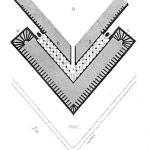
Ramesh Gulati and George Williams discuss Asset Management
[Read more…]Your Reliability Engineering Professional Development Site
A listing in reverse chronological order of these article series:
by André-Michel Ferrari 2 Comments

In line with the RAM acronym sequence, we often start and go no further than the “R” in Reliability. In doing so, we forget about the “M”. The question often asked is: “what is the reliability of the system?” But rarely asked is: “what is the maintainability of the same system?” Myself, am guilty of this omission. Hence this article to remind myself and you the reader, of the importance of Maintainability in industry.
[Read more…]
Human error causes 80% of plant and equipment failures. It is the single factor, which if controlled, makes the most difference to achieving world class equipment reliability and operational success. With the introduction of low cost communication and visual devices it is now possible to assist maintenance workers proactively prevent human error. By using interactive audio-visual devices workers can be coached through a job error-free to get right-first-time quality every time.
by Nancy Regan Leave a Comment
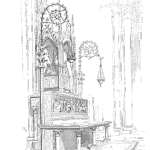
No way. It helps if you have a love – or even a fondness – for equipment maintenance and reliability. But other than that, just put your thinking cap on and you’re good-to-go!
[Read more…]by Karl Burnett Leave a Comment
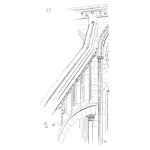
In 1861, Royal Navy regulations updated the Captain’s responsibilities. Centralized management control of the technical system continued to grow. Regulations now prevented Captains from modifying the ship. Many new standard report forms were required to be routed to superior offices in the bureaucracy.
Many rules from the 1717 and 1731 regulations were kept, for example: managing ship surveys, tracking repair costs, written communications with the dockyard about defects and their status, and periodic caulking.
[Read more…]by Mike Sondalini Leave a Comment
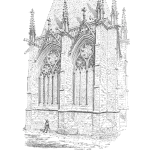
Using a comprehensive and inclusive definition, risk may be defined as the cost of “failure to add value” per unit time. Such failure includes performance deficiencies for employees, equipment, material and method. It includes the types of “failure to add value” comprising traditional waste such as overproduction, wait time, transportation, processing, inventory, motion and defects. It includes the cost of injury, litigation and damage to company reputation. It encompasses the total cost of failure and not just the cost of remediation. You must minimize risk to stay competitive. Risk is consuming the hidden wealth of your enterprise. It is disguised and concealed as the “cost of doing business.”
by Ramesh Gulati Leave a Comment
by André-Michel Ferrari 2 Comments
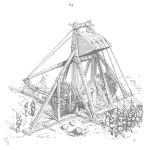
A proper CMMS (Computerized Maintenance Management System) setup can make a world of difference in an organization’s asset management journey. Conversely, a substandard setup can be a living hell for Reliability Engineers like myself and other analysts. I have personally wasted hundreds of hours of my work life sifting through a poor CMMS structure trying to find records. Ever wanted to make your Reliability Analysts more productive and engaged? If yes, then this article highlights 10 highly recommended set-up requirements.
[Read more…]by Mike Sondalini Leave a Comment

Let a Plant Wellness Way EAM System-of-Reliability halve your Annual Maintenance Costs
A Plant Wellness Way enterprise asset management system is a powerful solution for world class enterprise asset management (EAM) success. There are three scenarios when it is justifiable for a business to adopt PWW EAM as your company’s EAM methodology.
[Read more…]by Lindsay Walker Leave a Comment
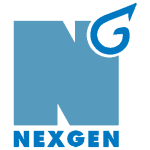
For conscientious plant managers and production leaders, achieving successful and sustainable Total Productive Maintenance (TPM) is a top priority. TPM is the key to reducing downtime, preventing breakdowns, and ensuring top-notch product quality during the process of manufacturing maintenance. But how do you put a TPM plan into action, and what steps should you follow to seamlessly integrate it into your existing operations and maintenance procedures? Keep reading, and we’ll break down what TPM is, how to implement it step by step, and why it matters. [Read more…]
by Nancy Regan Leave a Comment
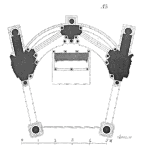
Do you ever mutter to yourself: “Reliability Centered Maintenance, FMEA, FMECA, and CBM? I’m so confused! Where do I even start?” If so, don’t skip this one!
[Read more…]by André-Michel Ferrari 1 Comment

Building a Reliability, Availability and Maintainability (RAM) model can provide numerous benefits to an Asset Management program. This includes conducting a Criticality Analysis. Criticality Analysis involves ranking assets based on their potential risk to the organization. It considers risk categories such as Production Impact, Safety, Environment, and Reputation, amongst others. The category list can vary and is a reflection of the organization’s structure. Organizations generally have a finite financial pool allocated to preserving asset function. A Criticality Analysis helps optimize the allocation of resources to each asset according to its importance in the system network. Ultimately this helps maximize revenue, minimize spend and maintain the organization’s license to operate.
[Read more…]by James Reyes-Picknell Leave a Comment

According to the Merriam-Webster dictionary, one of the accepted definitions for standard is: “something established by authority, custom, or general consent as a model, for example.” In our case, a standard comprises a document or sets of documents providing requirements, specifications, guidelines, or characteristics that can be used consistently to ensure that materials, products, processes, and services fit their purpose. There exist international standards on quality (ISO 9,000), risk (ISO 31,000), environment (ISO 14,000), energy (ISO 50,000), management and many other fields providing information and guidance on the practices, methods, and processes designed by groups of highly qualified international experts. Most technical field professionals utilize international standards to base their practice on trusted mathematically and/or scientifically proven methods. Trial and error are no longer acceptable out of the laboratory anymore today. But, lessons learned from its practice in conjunction with regretful real-life incidents and accidents provide knowledge on their risks, mitigation, and prevention. Most asset and maintenance management best practices and techniques are standard-driven, meaning they have been carefully defined and established. The SAE JA1011 Standard on Evaluation Criteria for Reliability Centered Maintenance (RCM) Process has an exciting background, including disappointing and successful stories before its principles were conceived and eventually incorporated into an international engineering standard.
[Read more…]by Mike Sondalini Leave a Comment

Users of the Plant Wellness Way EAM methodology use accuracy-controlled procedures to turn their company into an Accuracy Controlled Enterprise: a quality driven, “learning organization” effectively using useful technologies.
by Ramesh Gulati Leave a Comment
 Ask a question or send along a comment.
Please login to view and use the contact form.
Ask a question or send along a comment.
Please login to view and use the contact form.